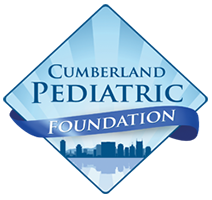2015 Research Changing the Game of Concussion Treatment
A concussion is a type of traumatic brain injury that can have severe effects on developing brains. Although most cases of concussions heal quickly, a range of 11-29% of pediatric patients continue to report symptoms up to one month after the injury. Recent research has focused much attention on the effectiveness of current treatments, new preventative methods being utilized, and sees a need in analyzing modern legislation regarding concussion clearance in sports.
Is more rest actually best?
For years, the medical community has accepted the idea that more rest for pediatric concussion patients leads to a more promising recovery.
However, recent research suggests patients who have mild brain injuries report slower recovery when prescribed five days of strict rest as opposed to 24-48 hours. One study, using 11-22 year old patients recorded that prescribing more rest to patients was no more effective than the 1-2 day recommendation and influenced the patient’s personal assessment of his or her injuries resulting in adverse effects. The study suggests that with current evidence patients who experience a mild concussion should be prescribed 24-48 hours of rest and, with shown improvement, should gradually return to a normal routine.
Benefits of Strict Rest After Acute Concussion: A Randomized Controlled Trial http://pediatrics.aappublications.org/content/135/2/213
Heads Up: A look at new concussion-prevention techniques
After many studies found a lack of general caretaker concussion knowledge as well as a lack of effective concussion reporting, the Center for Disease control developed “Heads Up.” The website was designed to help increase awareness of concussions as well as propose new preventative techniques in sports to decrease the risk of a concussion by limiting contact during sports practices, banning certain drills, and checking sports equipment regularly. Featuring a section for young athletes, high school athletes, parents, and coaches, “Heads Up” educates audiences on spotting a concussion and outlines each stage of concussion recovery.
Check out the “Heads Up” Site at: http://www.cdc.gov/headsup/index.html
Policy changes for concussion clearance
In 2009, the state of Washington passed the first concussion in sports law called the Zackery Lystedt Law, and currently, all 50 states have some version of concussion in sports legislation. Most laws include education to parents, coaches, and athletes, the athlete’s removal from play, and a requirement to obtain medical permission to return to play. Policy changes for concussion in sports laws for Tennessee passed in 2013 and connect community and school-related youth activities to appropriate guidelines and paperwork regarding concussion education for parents, coaches, school administrators, and athletes. In a study analyzing Rhode Island’s implemented concussion laws, researchers found the law’s educational effectiveness more than doubled emergency room visits without an increase in head imaging suggesting an increased attentiveness toward pediatric concussions.
For an in-depth look at the Tennessee legislation visit: http://www.capitol.tn.gov/Bills/108/Bill/SB0882.pdf
